TOP
WATER SERVICE LINE REPORTING
WATER SERVICE LINE INVENTORY MAP
HOW CAN I DETERMINE WHAT TYPE OF PLUMBING MATERIAL I HAVE?
Make sure we are lead free by identifying and reporting your water service line material
TAKE THE 2024 PIPE MATERIAL SURVEY
Wythe County Water Department is conducting an inventory that is required by the Environmental Protection Agency (EPA) and the Virginia Department of Health (VDH) to ensure your drinking water is lead free. The EPA has required all drinking water utilities to develop an inventory of pipe material on public (county owned) and private (customer owned) service lines. The county owns the service line from the water main to the water meter. The customer owns the service line from the customer’s residence to the water meter. To date, no lead lines have been found on the public side. This pipe material inventory, although not required to be complete, has to be electronically available to the public by October 2024. You will find that inventory as we develop it on our GIS Water Service Line Inventory Map (To access map, click on the link, click on layers, click on water service line inventory layer, check Lead Survey Project).
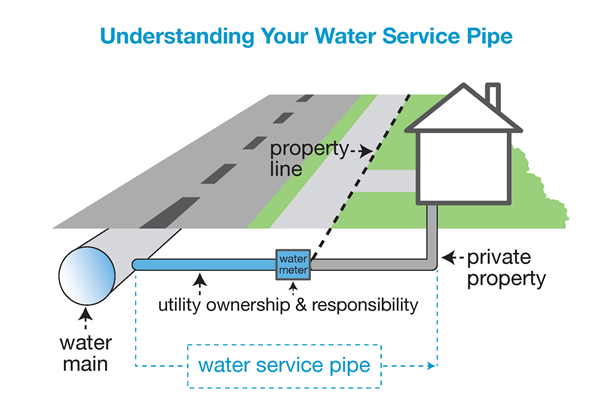
Why do we need your help?
Providing the highest quality drinking water is the top priority of the Wythe County Water Department. A part of meeting that goal is to make sure that the water coming out of your faucets is lead free.
The good news: The water that leaves our treatment plants is non-detect for lead. However, as this water flows through pipes, it comes in contact with materials. If there is lead present in those pipes or pipe fittings, lead can get into the drinking water. The water department has reviewed plans, specifications, shop drawings and Virginia Department of Health documentation to develop an inventory of the County water department service line material, but we need your help to identify the material used in your water service line (customer side).
What are we doing?
Wythe County has developed an inventory of all service line pipe material used in our public distribution system and in the customer's pipe from the meter to the home. The water department has reviewed plans, specifications, shop drawings and Virginia Department of Health documentation to develop an inventory on service material determining the county material is lead free. This inventory is a requirement of the Environmental Protection Agency's Lead and Copper Rule Revision (LCRR).
County Lead and Copper Sampling
Our drinking water is tested, and it is non-detect for lead when it leaves the treatment facility. In accordance with The Virginia Department of Health Office of Drinking Water waterworks permit for the County, we perform Lead and Copper sampling routinely for homes that could have lead and copper plumbing based on when they were built (before 1978). The county provides sample containers with instruction on obtaining samples to homeowners. These samples are sent to the Virginia State lab for analysis. Prior analysis has shown results below the 90th percentile for lead and copper.
What can you do?
The county and home owners have a shared responsibility to protect the drinking water from lead sources.
While we do not know of any lead pipes in our distribution system, customers - particularly those in older homes (prior to 1978) - may have lead plumbing or pipes that are joined with lead solder.
Locate and determine pipe material in your home and help the county meet the requirements of the LCRR by inspecting your home plumbing and reporting the pipe material that you have in your water service line coming into your home using the instructions below. If you are a renter, please contact your landlord to assist you with completing the survey.
Water Service Line Inventory Map
Water staff is using the age of the house along with a visual inspection of the service lines connected to the water meter to determine what type of pipe is present at each property. This process will continue until the inventory is complete.
You can search by address on the GIS Water Service Line Inventory Map to see what type of pipe, if any, is listed for your property. If the pipe material is listed as unknown, please visually check the water line coming into your house and let us know what you find on the survey form. You will find tips on identifying pipe material and a form where you can report your results on the pipe material page.
GIS Water Service Line Inventory Map (To access map, click on the link, click on layers, click on water service line inventory layer, check Lead Survey Project)

Pipe Material Information Survey
Pipe material is defined as:
(County Side / Customer Side)
Lead: Pipe that contains lead.
Non-Lead: Pipe that does not contain lead. This may include cast iron, PVC, copper or galvanized metal that is not downstream of lead pipe.
Unknown: Material not yet identified. Please inspect your pipe and complete the survey to report the material of the service line entering your home.

How can I determine what type of plumbing material I have?
The Wythe County Water Department is developing a Lead Service Line Inventory that is available on our GIS Water Service Line Map (To access map, click on the link, click on layers, click on water service line inventory layer, check Lead Survey Project). You can search by your property's address to see what pipe material carries water to your meter, and what type of pipe material comes from the meter to your home, if we have been to your meter box and were able to identify the material.
STEP 1: Check the GIS Water Service Line Inventory Map above to see if we have identified your pipe material. Pipe material is listed as Lead, Non-Lead, Galvanized Requiring Replacement or Unknown. This information was obtained by visual inspection at your meter box and based on the year your house was built. If your home was built, or your plumbing replaced, after 1988, it is unlikely that you have any lead components in the plumbing on your private side.
STEP 2: If the pipe material is listed as unknown, please fill out the Pipe Material Information Survey. You may complete this survey online or by submitting the paper survey mailed to you (paper surveys were mailed May 17, 2024). Since the Water Department does not know what type of plumbing materials are inside your home, we have provided some photos and testing tips to help you determine what type pipe material comes from your meter to your house.
STEP 3: Assess your pipes using the instructions below. You can also view this video which provides an overview of how to locate the pipe entering your home and perform a test: WATCH VIDEO
What you will need:
- A metal object to scratch the pipe with, such as a key, coin, or screwdriver
- A strong magnet
STEP 3.1: Locate your service line:
Find the water meter located on your property next to the road. The meter is covered by a metal or plastic cover. Typically, the water line will follow a straight line from that meter to your house or near your well if your property previously used well water. If you have a basement, look for the water line where it comes through the exterior wall closest to the location of your meter. If you don't have a basement, your water line may enter your house where your water heater and/or washing machine or crawlspace are located.
STEP 3.2: Perform a scratch test:
Use a metal object to scratch the pipe close to where it enters the house through the wall or floor.
Observe the color of the scratched area.
Step 3.3: Perform a magnet test:
Hold a magnet to your pipe and observe if it sticks to the pipe.
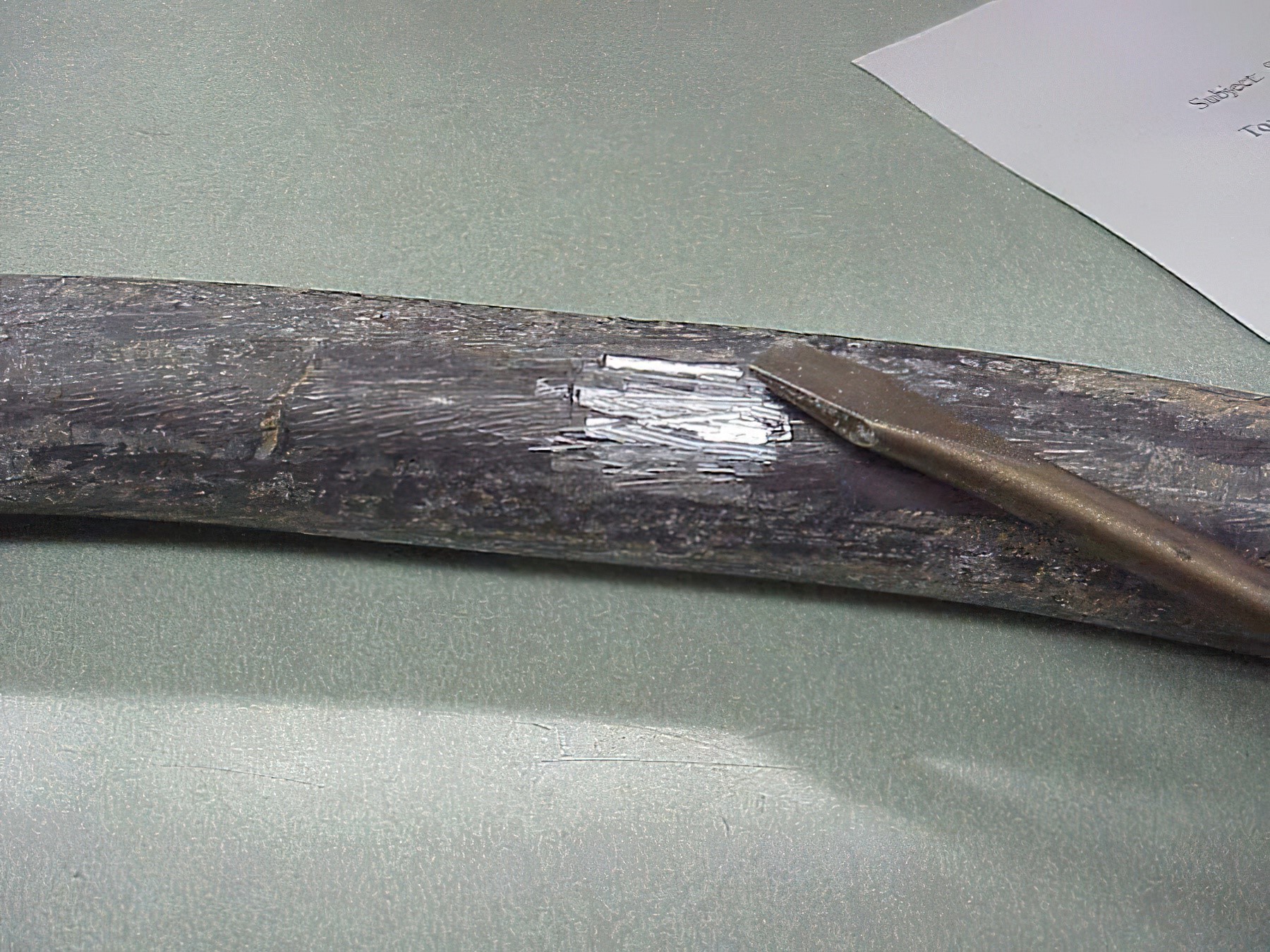
If the scratched area is shiny and silver, your service line is lead. A magnet will not stick to a lead pipe.
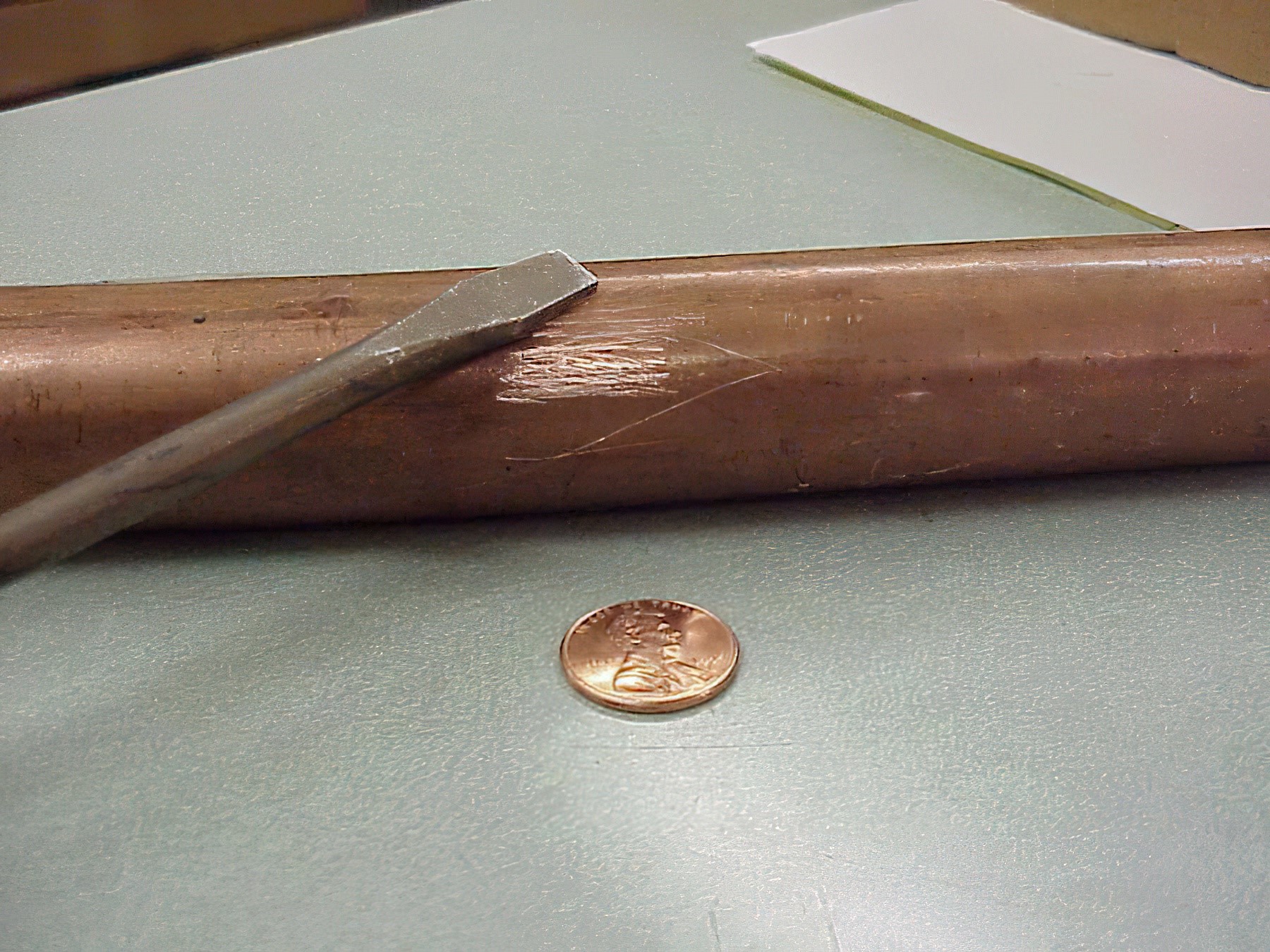
If the scratched area is copper in color like a penny, your service line is copper. A magnet will not stick to a copper pipe.
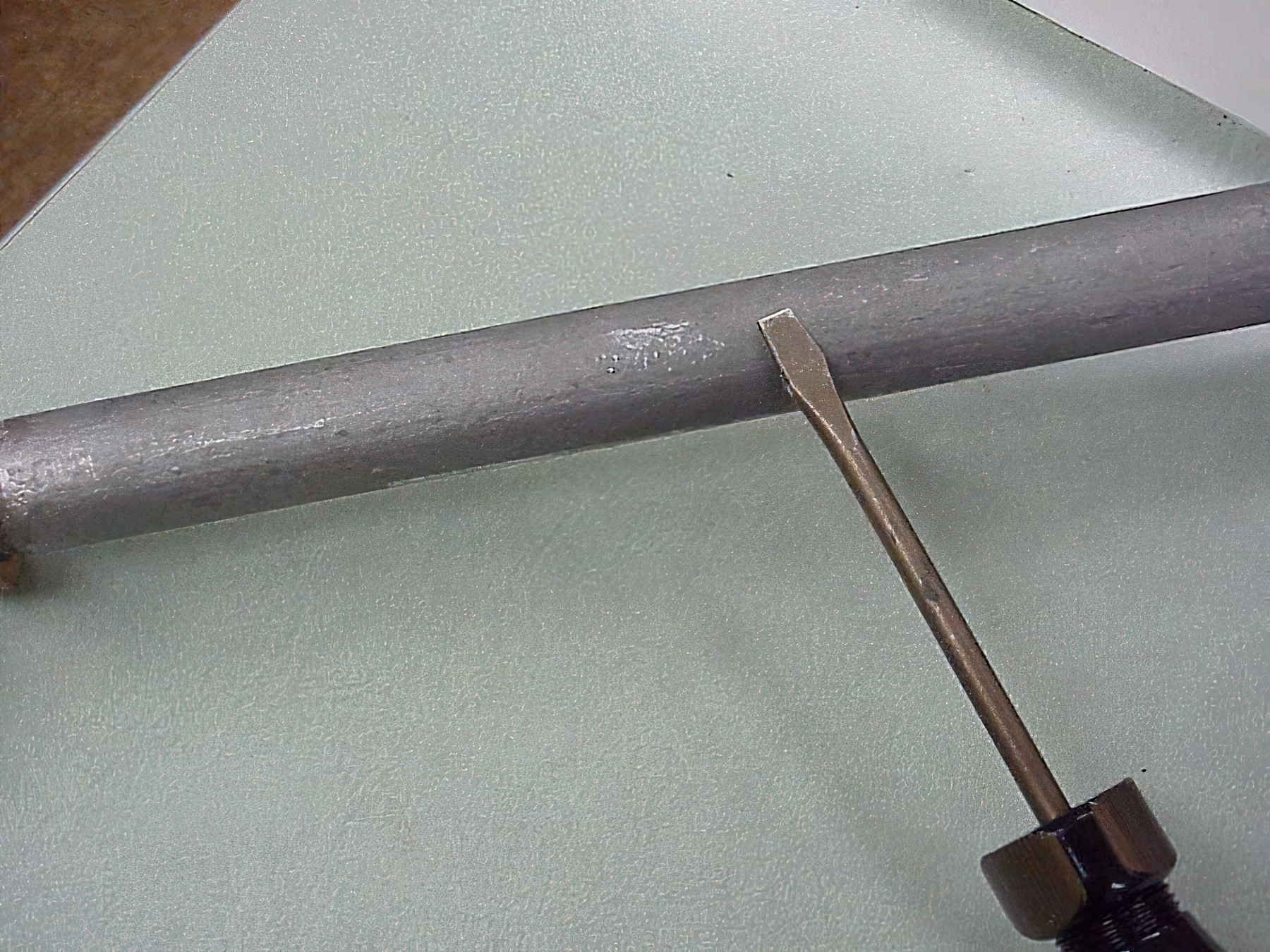
If the scratched area remains a dull gray, your service line is galvanized steel. A magnet will stick to this pipe.
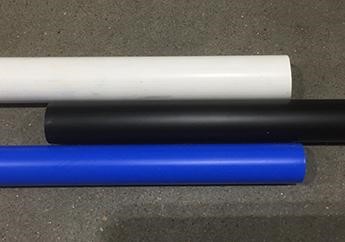
Your pipe may be plastic. Plastic pipes may be white, black, blue or red. If you do perform a scratch test, the scratched area will be the same color as the pipe. A magnet will not stick to a plastic pipe.
Pipe Materials
Please help us by identifying what type of material is in your water service line coming into your home.
Locate where your water service line enters your house.
Your drinking water enters your home through a pipe the connects the water meter to your home's plumbing in your basement (if you have one) or a utility closet where your water heater and/or washing machine are located.
If you don't' know where your water enters your house, find the water meter located in your property next to the road. The meter is covered by a metal or plastic cover. Typically, the water line will follow a straight line from that meter to your house, or near your well if you had one previously. If you have a basement, look for the water line where it comes through the exterior wall closest to the location of your meter. If you don't have a basement, your water line may enter your house where your water heater and/or washing machine are located.
Water service line pipes can consist of many different materials including lead, galvanized iron, brass, copper or plastic.
What to do if you identify lead in your service line:
- Continue to fill out the Pipe Material Information Survey
- You may replace the lead service line yourself. If you replace your lead service line and/or pipes, be sure to flush cold water taps after installing new household pipes or fixtures. New plumbing can release metals after installation. Flush plumbing for five minutes at a high flow rate once a day for at least three days.
- If there are lead service lines reported through the inventory process the county will work with the Virginia Department of Health to develop a Lead Service Line Replacement Plan, which to assist with the replacement of lead service lines.
FAQ
Is there a safe level of lead in drinking water?
The Safe Drinking Water Act requires the Environmental Protection Agency (EPA) to determine the level of contaminants in drinking water at which no adverse health effects are likely to occur with an adequate margin of safety. These non-enforceable health goals, based solely on possible health risks, are called maximum contaminant level goals (MCLGs). EPA has set the maximum contaminant level goal for lead in drinking water at zero because lead is a toxic metal that can be harmful to human health even at low exposure levels. Lead is persistent, and it can bioaccumulate (add up) in the body over time. Young children, infants, and fetuses are particularly vulnerable to lead because the physical and behavioral effects of lead occur at lower exposure levels in children than in adults.
It is important to recognize all the ways a child can be exposed to lead. Children are exposed to lead in paint, dust, soil, air, and food, as well as drinking water.
Information on lead in drinking water, testing methods and steps you can take to minimize exposure is available from the Safe Drinking Water Hotline (800-426-4791) or http://www.epa.gov/safewater/lead
If I have lead pipes, how do I reduce my exposure to lead before I am able to replace the pipes?
The first step to minimizing your exposure to lead is to have your water tested to determine if lead is entering your water through the pipes. Additional best practices include:
- Run your water to flush the lead out. If the water has not been used for several hours, run each tap for 30 seconds to 2 minutes or until it becomes colder before drinking or cooking. Running your tap flushes water that may contain lead from your pipes. Running your water like this can reduce lead-in-water levels up to 90 percent.
- Use cold, fresh water for cooking and for preparing baby formula. Lead dissolves more easily into hot water. Do not use water from the hot water tap for cooking, drinking, or to make baby formula.
- Do not boil water to remove lead. Boiling water will not reduce lead.
- Consider using a filter. Check whether it reduces lead – not all filters do. To protect water quality, maintain and replace a filter device in accordance with the manufacturer’s instructions.
- Regularly clean your faucet aerator. Particles containing lead from solder or household plumbing can become trapped in your faucet aerator. Regular cleaning or replacement every few months will remove these particles and reduce your exposure to lead.
- Consider buying low-lead fixtures. As of 2014, all pipes, fittings, and fixtures are required to contain less than 0.25 percent lead. When buying new fixtures, look for ones with the lowest lead content.
Can I shower in lead- contaminated water?
Yes. Bathing and showering should be safe for you and your children, even if the water contains lead over EPA’s action level. Human skin does not absorb lead in water. This information applies to most situations and to a large majority of the population, but individual circumstances may vary. Please consult your medical provider for individual recommendations.
References: https://www.epa.gov/ground-water-and-drinking-water/basic-information-about-lead-drinking-water